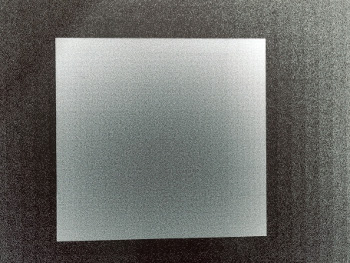Florian Cajori: A History of Mathematical Notations, 2 Vols. (1928/1993)
Filed under book | Tags: · history of mathematics, mathematics, notation

This classic study notes the first appearance of a mathematical symbol and its origin, the competition it encountered, its spread among writers in different countries, its rise to popularity, and its eventual decline or ultimate survival. Originally published in 1929 in a two-volume edition, this monumental work is presented here in a single volume.
First published by The Open Court Publishing, La Salle, Illinois, 1928 and 1929
Volume I: Notations in Elementary Mathematics
Volume II: Notations Mainly in Higher Mathematics
Publisher Dover Publications, New York, 1993
ISBN 0486677664
848 pages
Brian Rotman: Becoming Beside Ourselves: The Alphabet, Ghosts, and Distributed Human Being (2008)
Filed under book | Tags: · affect, alphabet, body, computing, gesture, god, language, mathematics, networks, posthuman, representation, self, semiotics, speech, subjectivity, technology

Becoming Beside Ourselves continues the investigation that the renowned cultural theorist and mathematician Brian Rotman began in his previous books Signifying Nothing and Ad Infinitum…The Ghost in Turing’s Machine: exploring certain signs and the conceptual innovations and subjectivities that they facilitate or foreclose. In Becoming Beside Ourselves, Rotman turns his attention to alphabetic writing or the inscription of spoken language. Contending that all media configure what they mediate, he maintains that alphabetic writing has long served as the West’s dominant cognitive technology. Its logic and limitations have shaped thought and affect from its inception until the present. Now its grip on Western consciousness is giving way to virtual technologies and networked media, which are reconfiguring human subjectivity just as alphabetic texts have done for millennia.
Alphabetic texts do not convey the bodily gestures of human speech: the hesitations, silences, and changes of pitch that infuse spoken language with affect. Rotman suggests that by removing the body from communication, alphabetic texts enable belief in singular, disembodied, authoritative forms of being such as God and the psyche. He argues that while disembodied agencies are credible and real to “lettered selves,” they are increasingly incompatible with selves and subjectivities formed in relation to new virtual technologies and networked media. Digital motion-capture technologies are restoring gesture and even touch to a prominent role in communication. Parallel computing is challenging the linear thought patterns and ideas of singularity facilitated by alphabetic language. Barriers between self and other are breaking down as the networked self is traversed by other selves to become multiple and distributed, formed through many actions and perceptions at once. The digital self is going plural, becoming beside itself.
With a Foreword by Timothy Lenoir
Publisher Duke University Press, 2008
ISBN 0822342006, 9780822342007
176 pages
Commentary (Ben Pritchett, Mute)
Review (Stevan Harnad, Times Literary Supplement)
Adrien Lucca: Light Transformer Prototype, 1–2 (2010–2012) [French, English]
Filed under artist publishing | Tags: · colour, design, light, mathematics
“Le présent travail est le fruit d’une recherche qui s’étendit sur plus d’un an, et que cette première publication n’épuise pas. [..] J’ai voulu offrir à son lecteur ou à sa lectrice une véritable expérience de lecture – au sens peut-être le plus conservateur du terme – doublée d’une expérience visuelle et tactile de première main. Je prétends ainsi leur communiquer une synthèse d’observations et de pensées privées, personnelles. Cet essai pourra par conséquent contenir des erreurs ou des naïvetés qui m’auront échappées. Avant tout, j’espère y avoir trouvé un point d’équilibre entre contenus vusuels, textuels et stylistiques.” (extrait de l’avant-propos)
Interview with the author, with a Foreword by Haseeb Ahmed (in English/French)
Author
Prototype de transformateur de lumière: Essai & documents, version 1 (in French, 32 pp, 2010, PDF)
Light Transformer Prototype (picture documentation, blog post, in English, 2012)



